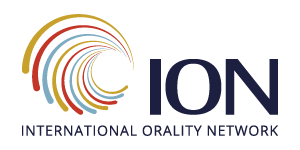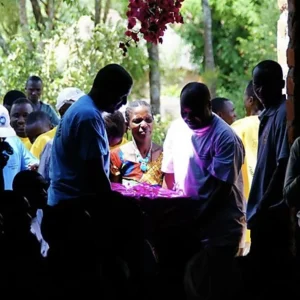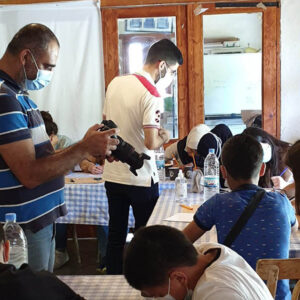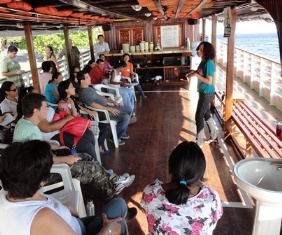 HOUSTON, TX (ANS – December 7, 2016) — I had a three-hour flight between two African countries, and I was seated by two ladies from East Asia. I was reading my New Testament and one of the ladies asked me, “Is that a dictionary?” I replied, “No, it’s a New Testament.” She asked, “What is a New Testament?” I told her that it’s a book about Jesus of Nazareth. She asked, “Who is Jesus of Nazareth?”
HOUSTON, TX (ANS – December 7, 2016) — I had a three-hour flight between two African countries, and I was seated by two ladies from East Asia. I was reading my New Testament and one of the ladies asked me, “Is that a dictionary?” I replied, “No, it’s a New Testament.” She asked, “What is a New Testament?” I told her that it’s a book about Jesus of Nazareth. She asked, “Who is Jesus of Nazareth?”
Well, those brief comments opened the door to a conversation that lasted more than an hour. We had already shared some about why we were traveling to East Africa. I had mentioned that I work with a water solutions organization, Living Water International, and that we help people acquire access to clean, safe drinking water, and teach people about life, relationships, friendships and other important lessons.
In response to the lady’s question about Jesus of Nazareth, I explained that the New Testament tells us about the life, teachings and Spirit of Jesus and that many people’s lives have been changed because of Him. As an example, I told her the story of the Samaritan Woman at the Well, from John 4. She was very interested, so I handed her my New Testament and she read the entire chapter. I then told her the story of Nicodemus from John 3, and she read that chapter as well.
I shared with her a little more about the nature of Scripture, the earlier books and chapters about the creator God, about the first man and woman, and other important background topics. I mentioned that it is known as the Old Testament, and that together, they make up what is known as the Holy Bible. When I said that she said, “Oh, I saw one of those one time, in a hotel room in Uganda.”
When she handed my New Testament back to me, she said, “Thank you, you have made this a happy trip for me.” She had already said that she would like to get a copy of the Bible for herself. I told her she could probably find one in a book shop in Uganda. If not, I knew she would find one in a hotel room.
That experience on the plane that day is an example of how we can use different forms of communicating the Good News of Jesus. Print media, as well as conversations and storytelling are powerful ways of reaching people, in their appropriate context. Today there are many other ways and means of communicating the Gospel; we are blessed to have modern technological resources that were not available just a few years ago.
Several years ago, a good friend of mine shared an experience of receiving a call from someone that turned out to be a wrong phone number. Once they realized it was a wrong number, my friend quickly said, “Wait a minute, maybe the Lord had you call this number for some special reason. Have you given much thought to your need for the Lord?” That question turned into a conversation over the phone which resulted in my friend sharing the Gospel, and the man praying and confessing his faith in the Lord Jesus.
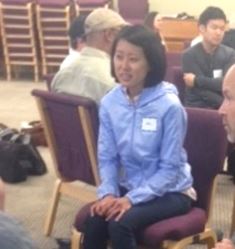 Since that time more than 30 years ago, because of the example of my friend, I have had the opportunity to share the Lord and pray with many individuals over the phone. Wrong numbers, telemarketing people and others are often open to the Lord and willing to hear how they can have a relationship with Him. I have shared many of those stories with others who have been inspired to do the same.
Since that time more than 30 years ago, because of the example of my friend, I have had the opportunity to share the Lord and pray with many individuals over the phone. Wrong numbers, telemarketing people and others are often open to the Lord and willing to hear how they can have a relationship with Him. I have shared many of those stories with others who have been inspired to do the same.
Of all the ways that the message of Jesus can be shared — by radio, television, over the internet or by telephone, as well as by the printed page — personal face-to-face conversations are probably the most effective. Personal engagement is also the most economical way of communicating the Gospel and making disciples.
I made some brief comments about the Lord to a wait staff during a busy mealtime in a restaurant one day. Time didn’t permit me to go into much detail, but as we paid our bill I sensed an interest and suggested that we talk later. I got the gentleman’s phone number, called him later in the day, and had prayer with him over the phone. He had been watching Christian programs on television and had a lot of questions, which the Lord had used to prepare his heart.
In our experience in the Orality Movement over the years, we are rediscovering the simple, but powerful ways of introducing people to a relationship with the Lord, and how they can become reproducing followers of Jesus. My friend, Dick Eastman with Every Home for Christ, said some years ago that when the work of God becomes too expensive and complicated, perhaps it’s time to reevaluate our methods and strategies.
One of the ways the Lord is using the Orality Movement is to help us get back the simple and reproducible ways and means that the Gospel spread throughout the entire populated world in the First Century. Another important factor is to consider how the Lord Jesus communicated, how He gave instructions and made disciples. We often ask the question, “Can we do it today the way He did it then?” The answer of course is “Yes.” It is important to recognize that the same Holy Spirit that worked through Him is now living in us, and is actively engaged in carrying out His kingdom purposes through His Church today.
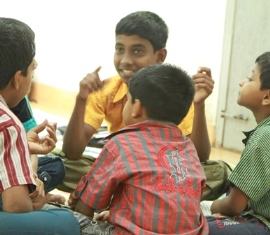 While simply asking questions and telling stories are core components in the Orality Movement, there are many other aspects. Now, since the formation of the International Society for Orality Missiology, and engaging more with the academic community, there is greater recognition of the depth and breadth of the Orality domain. As more educators, scholars and academic institutions become involved in the movement, we recognize the importance of focusing on two primary considerations: (1) Communicating the Good News of Jesus, and (2) Making Disciples. However, doing both of these in ways that are international, cross-cultural and reproducible to all people and every people group is essential. In other words, crossing all barriers, such as age, gender, ethnic and language groups is also important.
While simply asking questions and telling stories are core components in the Orality Movement, there are many other aspects. Now, since the formation of the International Society for Orality Missiology, and engaging more with the academic community, there is greater recognition of the depth and breadth of the Orality domain. As more educators, scholars and academic institutions become involved in the movement, we recognize the importance of focusing on two primary considerations: (1) Communicating the Good News of Jesus, and (2) Making Disciples. However, doing both of these in ways that are international, cross-cultural and reproducible to all people and every people group is essential. In other words, crossing all barriers, such as age, gender, ethnic and language groups is also important.
Being biblically-based, culturally appropriate and reproducible are top priorities in relation to the Great Commission and the Great Commandment. Sometimes when we hear about cross-cultural and multi-ethnic issues, we may think of some faraway place. However, most of us encounter people on a regular basis who are from different cultural backgrounds and various worldviews. The good news is, if we maintain biblical, simple and understandable terms and methods, we can overcome many of the barriers that may exist in sharing the Gospel and making disciples. The Holy Spirit is faithful to give insight and discernment in how to overcome barriers, build bridges and cultivate relationships that open the hearts of people to the love and truth of Jesus.
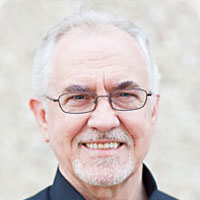 Photo captions: 1) Orality Training on the Amazon River. 2) Orality Crosses Cultural Barriers. 3) Orality Methods Crosses Generational Barriers. 4) Jerry Wiles.
Photo captions: 1) Orality Training on the Amazon River. 2) Orality Crosses Cultural Barriers. 3) Orality Methods Crosses Generational Barriers. 4) Jerry Wiles.
About the writer: Jerry Wiles is President Emeritus of Living Water International and serves on the advisory council and leadership team of the International Orality Network. He can be reached at: [email protected].
